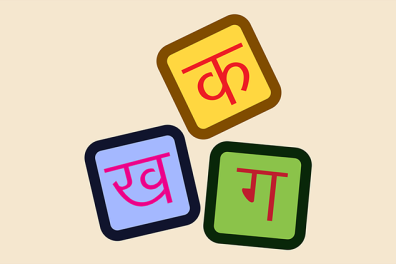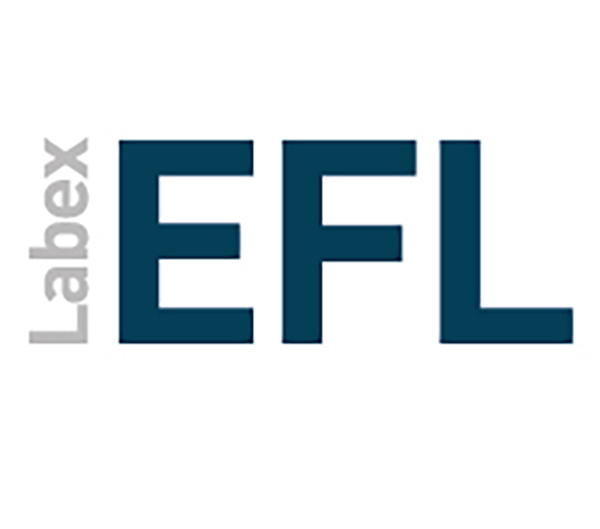International colloquium on Hindi grammar and lexicon, November 3-5

Event organized by the team Plurality of Languages and Identities: Didactics - Acquisition - Mediations-PLIDAM (Inalco), the Université de Paris and the Labex Fondements Empiriques de la Linguistique-EFL.
From Wednesday November 3 to Friday November 5, 2021 - PLC (Paris 13e) - Auditorium and amphitheatre 1
Inalco (PLC) - 65, rue des Grands Moulins - 75013 Paris
Hybrid event: some of the papers will take place in the auditorium but most will take place online.
Practical information:
International symposium
Wednesday, November 3: 08:50 - 17:50 - Auditorium
Thursday, November 4: 09:00 - 17:50 - Amphi 1
International study day
Friday, November 5: 09:30 - 18:30 - Auditorium
International Colloquium "Hindi Grammar and Lexicon"
Wednesday November 3 and Thursday November 4, 2021
Organizer: Ghanshyam Sharma (Inalco, PLIDAM, LABEX-EFL)
While the Hindi language has been extensively researched by a significant number of accomplished linguists over the past sixty years, much of the research carried out during this period focuses on theory rather than language. As a result, much of the data on Hindi is likely to have been fabricated. While such data may nourish theoretical reflection, they divert researchers' attention from many structural features of the Hindi language that remain too little studied.
On the lexical front, if we look closely at the lexicographical development of Hindi over the last century, we notice that most of the prestigious monolingual dictionaries of the language list a large number of words of Sanskrit origin, and that only a few endeavor to deal with the corpus of spoken Hindi. Unfortunately, none of these dictionaries addresses the central problems involved in standardizing the Hindi lexicon.
As a result of this complex situation, the Hindi teacher often faces a number of challenges. On the one hand, they cling to the idea that the age-old traditions of Sanskrit grammar and lexicography are the only useful tools for teaching Hindi. On the other hand, he has to keep pace with recent developments and apply new findings from linguistic research in the classroom. These contradictory demands are problematic.
This international colloquium aims to provide a forum for academics from different schools of thought working in the field of teaching Hindi as a foreign or second language to share their experiences. The two-day symposium will be structured around four plenary lectures and one general session (or, if necessary, two parallel sessions) to examine, from a pedagogical perspective, various key issues in Hindi grammar and lexicon.
International Study Day: "Hindi Grammars and Lexicons - Historical Perspectives"
Friday, November 5, 2021
Co-organizers: Émilie Aussant (CNRS UMR7597 HTL, University of Paris, LabEx EFL) and Ghanshyam Sharma (Inalco, PLIDAM, LabEx EFL)
This study day devoted to Hindi grammars and lexicons is part of a historical perspective, in continuity with the days organized as part of LabEx EFL's "Extended Grammars" operation ("Extended Sanskrit Grammar", "Exogenous Armenian Grammars", "Extended Arabic Grammar", "Extended Greek Grammar").
The descriptions of Hindi, which extend uninterruptedly over almost three centuries, are rooted in two allogeneic grammatical traditions: the Greco-Latin tradition, introduced to India by European missionaries/settlers/ traders (the oldest surviving grammar of Hindi is in Dutch) and the Sanskrit tradition. The descriptive models developed by these two grammatical traditions have been adapted in various ways, with varying degrees of success, to reflect Hindi data and enable it to be learned as a first or second language. The history of Hindi grammatical descriptions is therefore a particularly stimulating field of research for those interested in the phenomenon of "extended grammars". What's more, while the Sanskrit and Tamil grammatical traditions have been the subject of study in India and beyond for several centuries, the description of Indian vernacular languages has received little attention to date. This study day will therefore provide an opportunity to cover, in part, the history of the description of the languages of the Indian subcontinent, a field that has been little studied until now.
Work on the Hindi lexicon is rooted in three lexicographical traditions: Sanskrit, Persian and Greco-Latin. The first autonomous works on the Hindi lexicon are generally considered to date back to the 14th century. The earliest representative of the tradition would be the Khalikbari, compiled by the famous poet Amir Khusro (an Indian-born Turk) in 1340. This work, which is not limited exclusively to nouns (it includes grammatical particles), offers the reader several synonyms for different dialects of ancient Hindi, Persian and Turkish. Until the compilation of the great Hindi dictionary Shabd Sagar between 1922 and 1929 by the Nagari Pracharini Sabha of Benares, numerous works followed one another, composed by Indian scholars or foreigners, for literary composition or language learning, monolingual or bilingual.
The papers presented at this conference seek to answer, among other things, the following questions: how is the Hindi language presented in grammars and dictionaries (a unified variety, among others? a variety with dialectal variants? a variety derived from Sanskrit?...)? What forms does its institution take? How, and with what degree of success, have the grammatical models developed for Sanskrit or Greek/Latin been adapted to Hindi? How did the specificity of Hindi emerge in the course of these adaptation efforts?

Colloque international sur la Grammaire et lexique du hindi et Journée d’étude internationale « Grammaires et lexiques du hindi – Perspectives historiques »- Programme et Résumés (1.26 MB, .pdf)